Oops, something went wrong.
In a world of light and color, Age-Related Macular Degeneration casts shadows on millions of lives. Research by Bond University offers a beacon of hope.
Navigating the ninth decade of her life, Margaret has been blessed with physical vitality but robbed of the one thing she needs to fully enjoy it – her eyesight.
“It impacts almost everything because your sight is everything,” the AMD patient said.
“If I'm walking through a shopping centre, I know nobody - their faces are blank.
"Even though I'm 82 I am very fit and if they could find something to help the (AMD) research would be absolutely wonderful.”
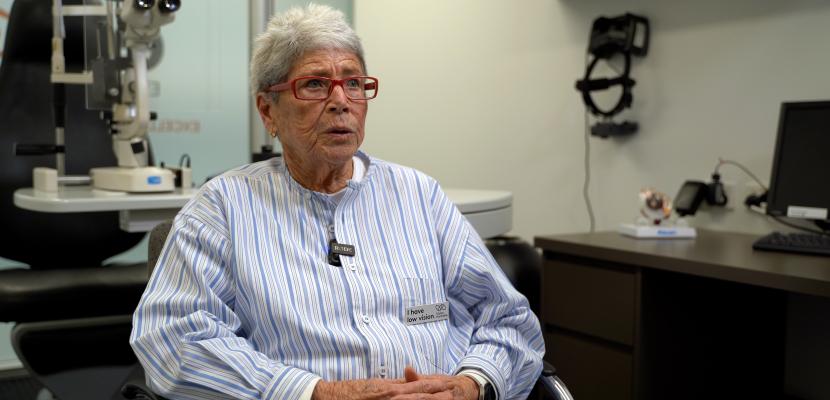
What is AMD?
Chances are you or someone you love will be affected by AMD.
Age-Related Macular Degeneration is a chronic disease of the macula, the part at the centre of the retina which controls the eye’s ability to focus.
The ability to read, watch TV, and recognise faces are all impacted by AMD which can have a devastating impact on the quality of life and in many cases the mental health of sufferers.
It is the most common macular disease in Australia, responsible for half of all blindness and severe vision loss. About one in seven people over the age of 50 years suffer from AMD to some extent. That is 1.5 million Australians who would benefit greatly from a viable treatment for AMD.
There are two stages of the disease. Wet AMD is characterised by the formation of blood vessels at the back of the eye. Dry AMD is a combination of the breakdown of the Bruch’s membrane, which maintains the function of photoreceptors and the death of retinal pigment epithelial (RPE) cells in the macula.
Injections have proven to be an effective treatment for wet AMD but there is no treatment for early, intermediate or late-stage dry AMD.
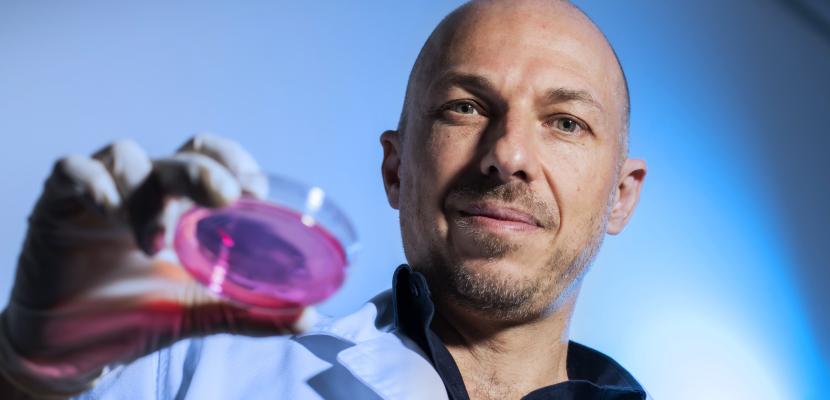
Researchers from Bond University believe they are on the cusp of reversing vision loss through stem cell therapy in which manufactured synthetic epithelial cells are transplanted into the eye, reversing the death of photoreceptors that detect light and transmit visual signals to the brain.
Dr Jason Limnios from Bond University’s Clem Jones Centre for Regenerative Medicine has devoted the past 10 years to seeking a treatment for AMD. He has worked closely with patients like Margaret to better understand the condition.
“They share with me their experience of going blind, their fears of going blind,” he said.
“And they think I understand because I understand the cells, but I don't understand how they feel.
“All I can see is that their lives are changing and that they're scared - and that motivates me so much.
“If we can make a whole retina, there’s really no retinal disease that we can't do something about.”
The Clem Jones Centre for Regenerative Medicine
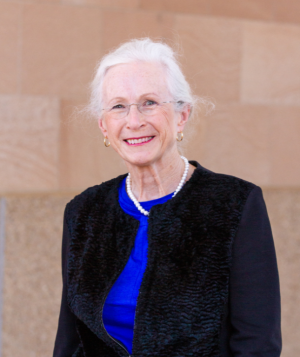
The centre was established in 2011 with a grant from the Clem Jones Trust, a philanthropic fund established by the former Lord Mayor of Brisbane Clem Jones.
Professor Helen O’Neill is an eminent immunologist and stem cell biologist who leads the CJCRM’s 13-strong staff of scientists, headlined by Associate Professor Nigel Barnett and Dr Limnios.
The team is working to develop and test a delivery system of stem cell-derived RPE cells, supported by a prosthetic membrane, that can form a uniform monolayer of pigmented cells which function like cells in the healthy eye.
Their work focusses on several areas that need to be developed to generate a stem cell therapy for AMD, Professor O’Neill said.
“The team must perfect the manufacture of cells and the method for implantation to ensure cell survival,” she said.
“We need to increase our understanding of the inflammation that occurs in the eye of sufferers which will impact successful therapy. Drugs therapy to allow the body to accept the implant must also be developed.
“We're doing work on all of those aspects of treatment to make sure that not only do we produce good cells, but that we manage the environment of the diseased eye into which we put the cells.”
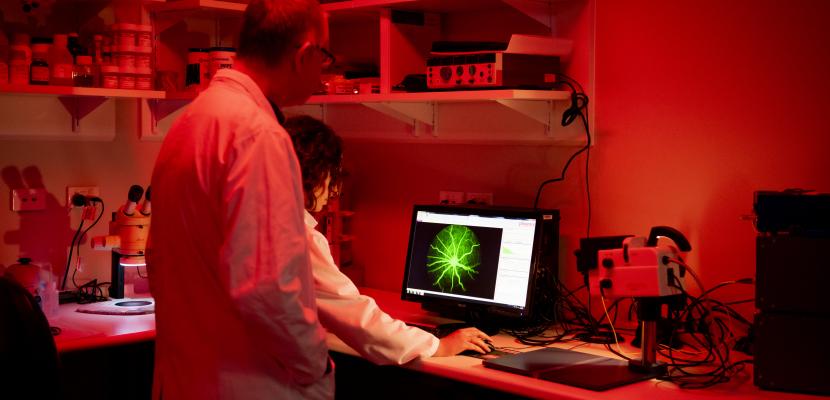
Bond’s world-leading technology
In 2013 Dr Limnios developed a way to turn stem cells into RPE cells in a process that is compatible with human clinical trials.
Speed and efficiency are the major hallmarks of his process with cells maturing in about 14 days, with 80 per cent of them successfully becoming RPE cells. He has since developed processes to create rod photoreceptors.
These cells are grown on a nanospun polymer membrane that was invented by the first CJCRM Director Patrick Warnke and Qin Liu in 2010.
These membranes, which can be safely transplanted into a patient’s eye, are currently produced by post-doctoral fellow Naomi Abbasi.
“Developing the tools has been our strength and we hold patents on several of our procedures, which puts us in a unique position,” Professor O’Neill said.
“One is on the protocol for producing retinal cells from stem cells, which I think is amazing.
“Jason (Limnios) has generated several protocols for producing cells under clinically relevant conditions.
“His protocol is fast and efficient and produces cells in numbers suitable for human transplantation.”
Manufacturing RPE cells
It was a sliding doors moment that could change the lives of millions of people.
Dr Limnios was at Bond University on what was supposed to be a two-month secondment when he discovered a way to mass produce clinical grade retinal cells from stem cells that are safe to transplant into a patient.
“I was living in China and I was called over as a favour to help get the project started, and I had a breakthrough pretty quickly,” he said.
“The good thing about it is it doesn't just let us make one cell type of the eye, it lets us make many retinal cell types.
“So now we've gone from making the base layer of the retina, which is like a brown layer of cells that takes care of the rest of the cells, to making all the different other cell types that are in the retina as well.
“That has become the platform for all our stem cell technologies.
“This has grown over time into something that is becoming realistically possible for a therapy, an actual treatment for patients.”
The next phase
There are two major steps to be taken before the team has a protocol that can be presented to the government regulatory body, the Therapeutic Goods Association (TGA).
The cells need to be produced at a scale that allows for efficiency in clinical trials.
Dr Limnios is currently working on a design for a robot that would automate the cell development process to remove the variability of human handling.
Surgical techniques for implanting the cells must also be developed through trials on pigs, whose eyes closely resemble human eyes.
“The information on safety and efficacy of implants obtained in animals then allows us to consider clinical trials and to approach the TGA for approval,” Dr Limnios said.
The Cutmore Bequest
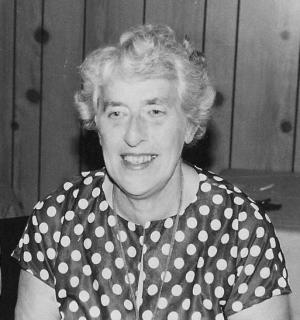
Cora Cutmore’s was a life lived large.
The spirited child of a Darling Downs pioneering family was sent to board at the Church of England Girls' School in Warwick but quickly decided it wasn’t for her and arranged a transfer to Warwick State High School.
After graduating she travelled to Brisbane to become a nurse and never looked back.
She became a feared and respected matron, a ward manager who effortlessly matched wits with surgeons she encountered in “her” corridors.
The spirit of adventure that led her to leave home at such a young age never abandoned her as her career took her to Melbourne, Hobart and rural communities in Queensland before she travelled to England, Europe, the United States and New Guinea.
In her later years she suffered from AMD. A woman who had travelled the world alone, managed wards in busy hospitals, and amassed a fortune through shrewd share trading, had lost her independence.
Realising that her time was nearing an end, Cora entrusted her niece and nephew, Don Cutmore and Janet Price, to find a medical research project that would benefit from her multimillion-dollar share portfolio.
'I was charged with a very special project, and that was to find a worthy recipient for my aunt's lifelong frugality. A woman who used the same tea bag three times to save money'
Cora Cutmore died on her 93rd birthday in 2016, but her legacy lives on through the work of the Bond University CJCRM.
“Apart from my two daughters, this is the important thing in my life,” declared Janet Price, whose mother also suffered from AMD.
“I was charged with a very special project, and that was to find a worthy recipient for my aunt's lifelong frugality. A woman who used the same tea bag three times to save money.
“And this was the project that my cousin and I, two of her most trusted relatives, came up with.
“And we have had not one regret.”

On the day we visited Janet Price to hear the story of her aunt’s life, she had just returned home from doing the rounds as a volunteer for meals on wheels.
The retired school principal met us at the door of her Daisy Hill home determined to make her voice heard.
“My aim today is to increase awareness of macular degeneration because no one knows much about it, because it’s not fashionable,” she said.
“If we go blind they think, well, she's old and she's had a good life.
“That's kind of the feeling we're all getting, all my age group know someone with AMD.
“And my friend this morning, we're driving around the different houses for the elderly and she said, ‘No one cares about us anymore. It's always the young, glamorous sicknesses that are hitting the newspapers.
“They don't see the old person who now can't read, can't watch TV, who can't find a number on their phone, can't garden, they can't crochet for the grandchildren.
“They can’t even babysit because they can't be trusted with the grandchildren in their house.
“It is that impact on families that makes this cause so important.”
The Clem Jones Foundation
Bond University is proud be partnered with The Clem Jones Foundation which supports multiple medical research projects across Queensland.
The foundation, a philanthropic organisation established by Brisbane’s longest-serving Lord Mayor, has been a major benefactor to the stem cell research undertaken at Bond University.
Dr Jones was also heavily involved in sport - in particular cricket and billiards – and was a successful businessman and generous philanthropist.
CEO Peter Johnstone considered Dr Jones a close friend and mentor and admits he has a personal investment in the work being undertaken at Bond.
“Clem Jones had macular degeneration and it was very debilitating for him,” he said.
“He was a voracious reader, a studier of media who read books on a daily basis and AMD really stopped all that enjoyment for him.
"So one of his wishes was to see a cure for macular degeneration.’’
Mr Johnstone said he and the staff and board of the Clem Jones Foundation celebrated the success of the Bond research team and were confident the team were on the path to finding a treatment for blindness.
“It's a moonshot and we're proud to be a part of that,” he said.
“Clem himself would be down there every day, I'm sure.
“He'd be inspired by it. He was always inspired by medical researchers in the same way we are.”
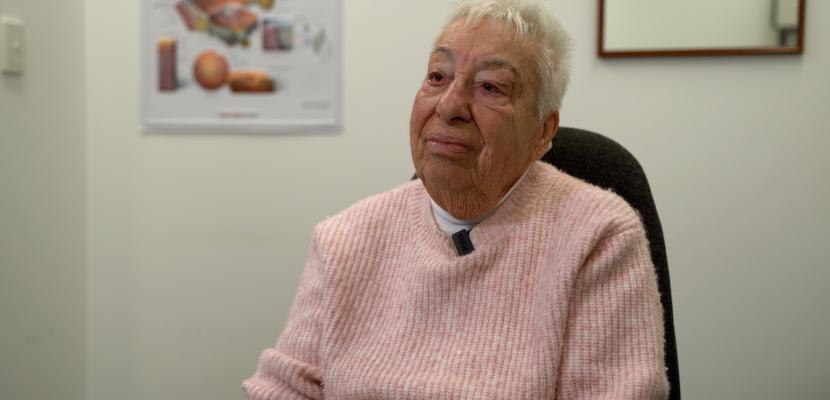
Thank you from Bond University
“We're grateful for all of the support that we've had so far,” Dr Limnios said.
“And we are grateful for anyone that understands the help that we need and is willing to consider it.
“We wouldn't be here without that help.
“We don't take anything for granted and we’re not wasteful because we care about the money.
“Every dollar counts to us, and we know that it comes because people want to help us get to a solution.”
Roma, another AMD patient, said: “(A cure) would be brilliant for many, many reasons - not because I could see better and not have to have injections and all of that - but it would be so good for humanity.”